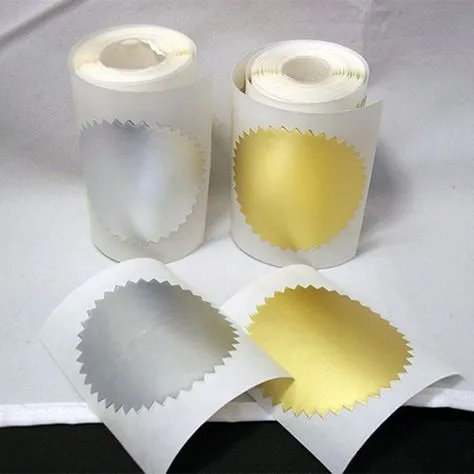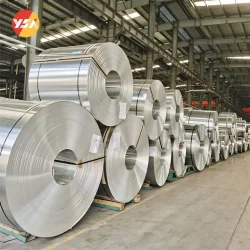Aluminum Foil Bottle Sealings Like:
- Yogurt Lid
- Milk Powder Lid
- Beverage Cap
- Cosmetic Bottle Cap
- … …
are commenly seen.



Common aluminum foil caps are usually between 0.18 mm and 0.25 mm thick. This range provides sufficient strength and stiffness to ensure the performance of the cap when sealed and opened. The diameter of the cap varies depending on different bottle top sizes and container types.
Layers of Aluminum Foil Bottle Sealings
Properties
Aluminum foil lids have good sealing properties to protect the freshness and quality of items such as yogurt, liquid bottled products and cosmetics. They fit tightly over the mouth of the container, preventing air, moisture or other contaminants from entering.
Leak-proof: Aluminum foil lids typically have good leak-proof properties, preventing liquid or semi-solid products from leaking out of the container.
Anti-oxidation: Aluminum foil material has good anti-oxidation performance, which can block the entry of light and oxygen, reduce the oxidation reaction of the product, and extend the shelf life of the product.
Hygienic: Aluminum foil lids are usually single-use, which can maintain the hygiene and safety of the product and avoid cross-contamination.
FAQ: Why do yogurt lids and milk lids use aluminum foil as lid material?
1. Barrier property: Aluminum foil has good barrier property, which can effectively isolate the influence of air, light, moisture and odor on the product.For food products that are susceptible to external influences, such as yogurt and milk, the use of aluminum foil lids can prevent the entry of oxygen, slow down the oxidation reaction, and maintain the freshness and quality of the products.
2. Sealing performance: Aluminum foil lids have excellent sealing performance, which can tightly fit the mouth of bottles or containers to prevent the product from leaking or being contaminated by the outside world.This is especially important for liquid products such as milk and yogurt to ensure safety and hygiene during storage and transportation.
3. Heat resistance: Aluminum foil has good heat resistance and can withstand high-temperature treatments and sterilization processes.This is very important for products that require high temperature treatment such as yogurt and milk to ensure hygiene and safety during the production process.
4. Visibility and brand image: Aluminum foil lids can be printed and color coated to make the product unique and attractive. This is useful for brand promotion and marketing to increase product visibility and brand image.
FAQ: What are the special applications of aluminum foil in cosmetic packaging?
Anti-theft and anti-counterfeiting: Aluminum foil lids can provide some anti-theft and anti-counterfeiting features. Since aluminum foil lids usually need to be broken in order to be opened, in addition to providing barrier and sealing properties, they are also a guarantee of product closure and integrity to a certain extent.This helps consumers to confirm the original condition of the product and prevents unauthorized tampering or counterfeiting of the product by unscrupulous persons.
1. Closure: Aluminum foil lids usually require tampering to open, and this closure provides a degree of protection to ensure that the product has not been opened or used since it left the factory.Consumers can verify the closure of a product by examining the foil lid to see if it is intact.
2. Printing techniques: Aluminum foil lids can have special printing techniques applied, such as heat transfer, laser engraving, or watermarking, to add unique logos or patterns to the lid. These logos or patterns are usually highly sophisticated and difficult to replicate, making the lids more difficult to counterfeit.
3. Anti-counterfeiting labels: Attaching anti-counterfeiting labels to aluminum foil lids is another common anti-theft and anti-counterfeiting measure. These labels usually include unique serial numbers, QR codes, bar codes or are made with special materials to verify the authenticity of the product.Consumers can scan or check the label to confirm the authenticity of the product.
4. Packaging design: Uniquely designed packaging forms and structures can also provide certain anti-theft and anti-counterfeiting effects.For example, the use of specially shaped aluminum foil lids or bottle tops can increase product identification and security, making it more difficult to imitate or substitute.
5. Security seals: The addition of security seals between the foil cap and the container is another common practice for theft and counterfeit prevention.These seals are usually tearable, breakable or have special markings that allow consumers to identify whether a product has been opened or used without authorization.
A combination of these anti-theft and anti-counterfeiting measures can increase the security and authenticity of cosmetic packaging, ensuring the original condition and quality of the product.They help consumers identify genuine products and provide a layer of protection for brands and manufacturers against unscrupulous elements and shoddy products on the market.

